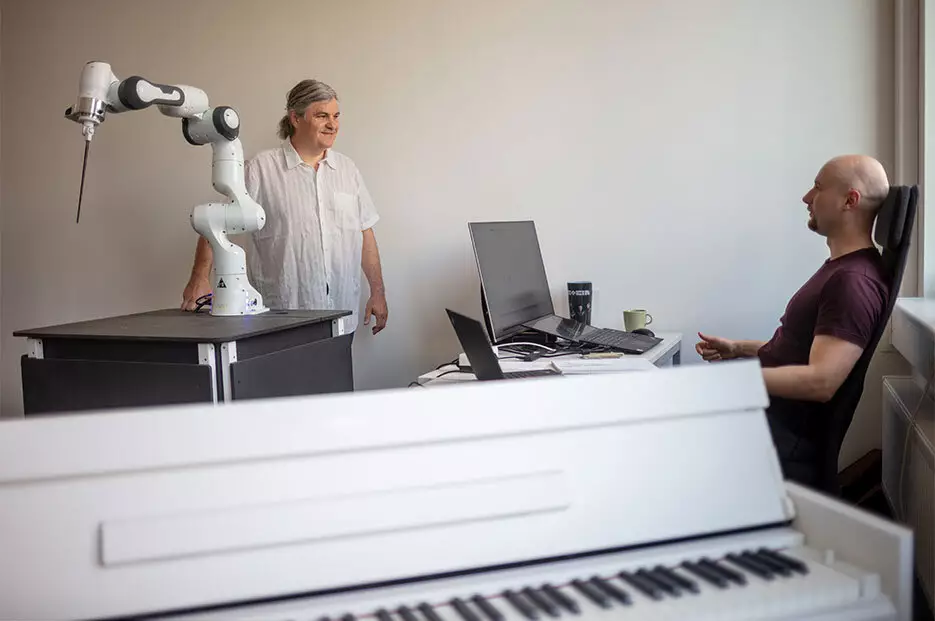In a remarkable display of technological advancement, a three-armed robot has made its grand debut as an orchestra conductor in Dresden, Germany. This innovative machine, equipped with arm-like structures resembling lightsabers from the Star Wars franchise, is not just a robotic novelty; it’s the product of extensive research aimed at enhancing musical performance. The robot conducted the Dresdner Sinfoniker orchestra during two performances, guiding musicians with movements meticulously designed to accommodate contemporary compositions.
The development of this robotic conductor was anchored in the belief that technology can enrich human collaboration rather than simply replace it. The creative mind behind the musical venture, composer Andreas Gundlach, drew inspiration from the collaborative robots—known as ‘cobots’—being developed at Dresden’s Technical University. The purpose of these cobots is to work alongside humans, enhancing productivity and creativity. Gundlach’s vision was to harness robotic capabilities to push the boundaries of orchestral conducting. This concept raises intriguing questions: can a machine truly understand the nuance and emotion inherent in music, or is it merely a sophisticated tool directing human artistry?
The robot’s development was not an overnight endeavor; it was the culmination of two years of rigorous training and collaboration with experts. Gundlach described the rigorous process of teaching the robot to execute aesthetic arm movements that communicate effectively with the orchestra. This venture highlighted the complexity of human expression in conducting, as Gundlach found himself appreciating the profound intricacies of human nature during the training. The precise articulation that a human conductor conveys—timing, emotional nuance, and dynamic swells—poses a monumental challenge for a machine. This recognition brings forth a vital discussion about the irreplaceable qualities of human performers.
During the debut performances, the robot showcased its ability to control multiple sections of the orchestra simultaneously. This feature became particularly evident during the performance of “Semiconductor’s Masterpiece,” where the robot deftly guided the orchestra through a composition that required multi-layered coordination. Such a level of independence for each conducting arm is a feat unattainable by a human conductor, suggesting that this robotic invention could open doors to innovative concert experiences that challenge traditional performances’ structure.
As technology continues to evolve, the integration of robotic conductors into orchestras could fundamentally reshape our understanding of performance art. The implications extend beyond mere entertainment; they challenge our cultural perceptions of artistry, originality, and the role of technology in creative processes. As Gundlach aptly noted, this experiment serves as a reminder of the beauty inherent in human capabilities that even the most advanced machines struggle to replicate. Ultimately, the journey toward integrating robots into the realm of live music raises profound questions about collaboration, creativity, and the future of artistic expression.


Leave a Reply